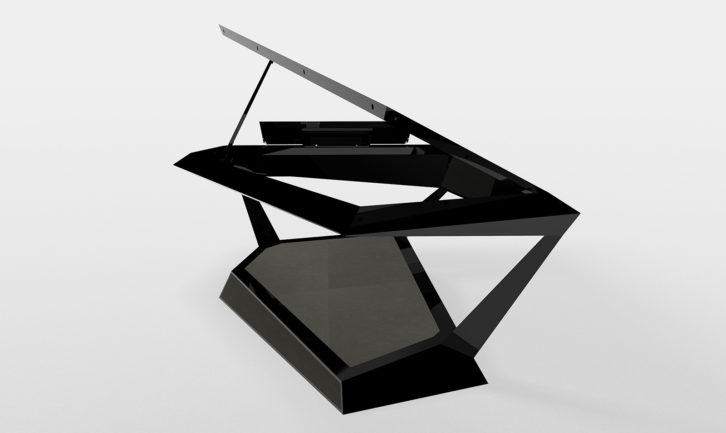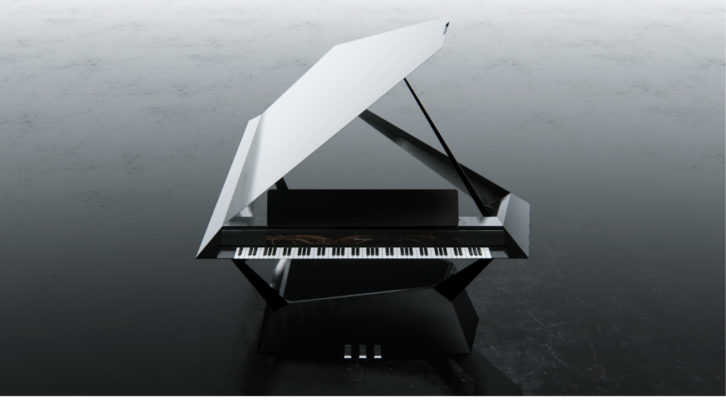The piano has been around for 300 years. (My Yamaha U1 has been around for 57 of those years).
What will the next 300 years of piano look like? Roland wanted to ponder that and has had designers working on that mission for four years as part of a competition that has now yielded: The GPX-F1 known as The Facet.
The Facet has evolved somewhat since it took Grand Prize for US designer Jong Chan Kim. It is worth looking at all the winning designs, especially if you are a lover of musical instruments and/or industrial design.
Here’s the high level on The Facet: There are speakers and resonators packed in everywhere throughout the minimalist, angular body, from the base to the top board to the inside of the hollow frame. This is an attempt to recreate the sonic resonance that traditionally comes from the piano cabinet. Near-field speakers project sounds like the noise that hammers make when they hit an acoustic piano string. So whether you’re playing or listening you are meant to get a realistic, analog, traditionally evocative sound.

It does beg the question of why one needs to hear hammers being hit if there are no hammers? A bit like introducing film grain artifacts to digital video to cue the deep emotional responses we have to signs of mechanical life. It does make you also wonder–when things no longer need to natively make a sound and the old mechanical sounds are dimly in the past, what happens to our emotional connection? In some ways, artifacts are the battle scars of creativity and of overcoming limitations. Without those artifacts, how will we feel about our mastery? If a tree falls in the forest….
Here’s how The Facet looked, and was described in 2016 when it won the award:

The Facet Grand Piano is designed with two keywords in mind: “unique” and “elegance.” All of the speakers are placed within the base sound chamber not only to boost the sound quality, but also to introduce a new design that challenges current perceptions. The solid base produces accurate and excellent sound quality that will be sure to astound audiences, while the absence of a soundboard completes the instrument’s modern expression. The lid’s function is also critical, serving as the canvas for audio reproduction, with soundwaves bouncing off it towards the audience. Unlike other digital pianos, it has a full touchscreen for interfacing with other digital enhancements. The Facet is a true vision of the future, breaking with traditional styles and methods of piano construction.









